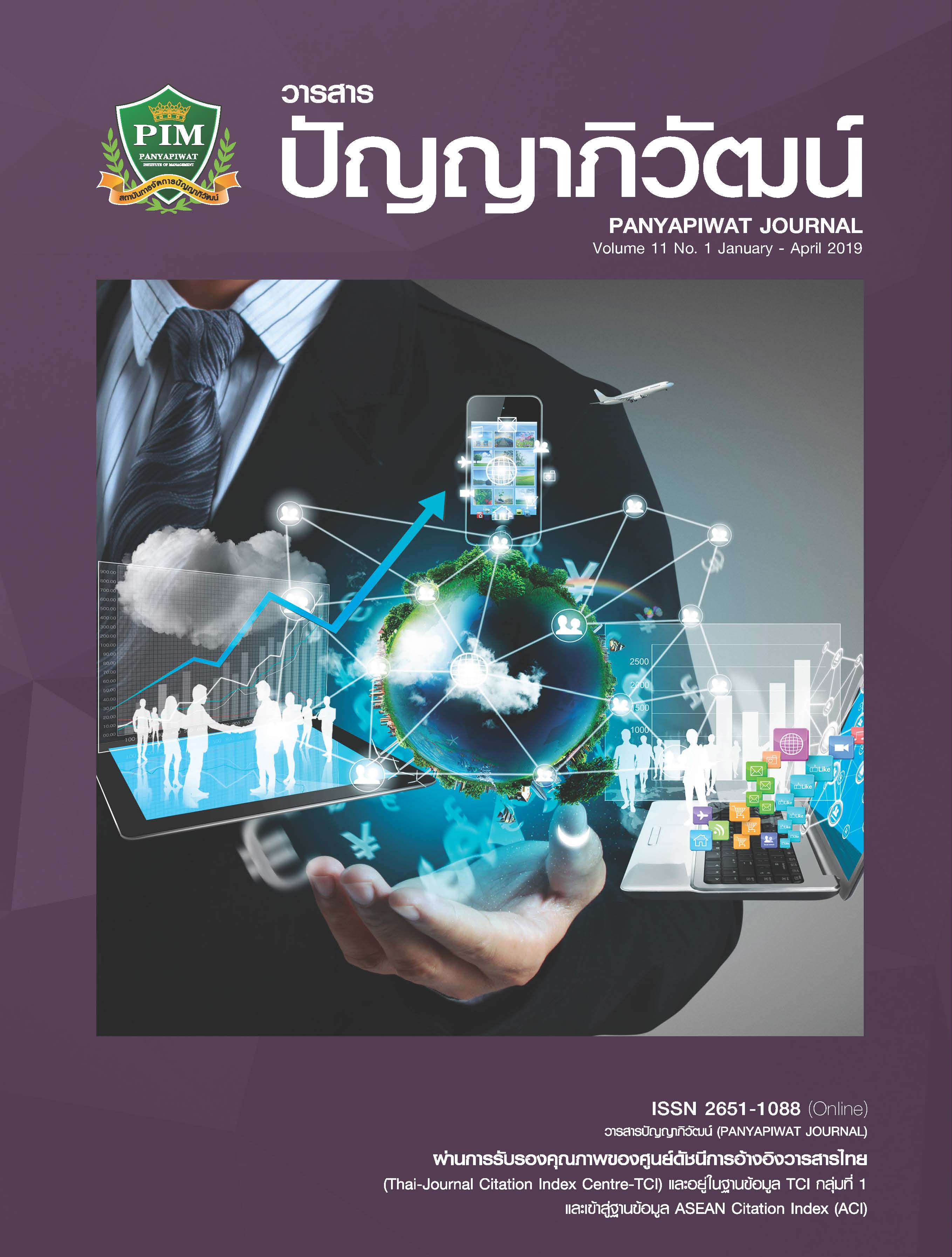RESEARCH ON THE INFLUENCE RELATIONSHIP BETWEEN CORPORATE RELATIONSHIP CAPITAL AND KNOWLEDGE TRANSFER EFFECT
Main Article Content
บทคัดย่อ
In the context of a globalized economy, knowledge transfer between companies is one way to remain competitive. At present, most of the existing researches are from the internal technological development and knowledge transfer process of enterprises to inquire into the factors affecting the company’s knowledge transfer (Bao, 2014). Less is the research on the effect of knowledge transfer between organizations from the perspective of the relationship between the capital owned by the company itself and the emotional willingness factor it embeds in the behavioral impact. Based on this, this paper proposes and explores the following questions: whether the relationship capital owned by the company itself and the emotional willingness factors it brings embeds the corporate behavior and then affects the effect of knowledge transfer
between organizations. Specifically, this paper explores the influence of corporate relationship capital on knowledge transfer effectiveness through the willingness of knowledge transfer. This paper starts from the four dimensions of corporate relationship capital (trust, commitment, conflict management, and effective communication) and examines their effects on knowledge transfer through knowledge transfer willingness. The results show that the willingness to transfer knowledge has some mediating effects in the influence of the two dimensions of trust and commitment on the effect of knowledge transfer. In the influence of conflict management and effective communication of corporate relationship capital on the effect of knowledge transfer, the willingness to transfer knowledge plays a completely mediating role.
Article Details
“ข้าพเจ้าและผู้เขียนร่วม (ถ้ามี) ขอรับรองว่า บทความที่เสนอมานี้ยังไม่เคยได้รับการตีพิมพ์และไม่ได้อยู่ระหว่างกระบวนการพิจารณาลงตีพิมพ์ในวารสารหรือแหล่งเผยแพร่อื่นใด ข้าพเจ้าและผู้เขียนร่วมยอมรับหลักเกณฑ์การพิจารณาต้นฉบับ ทั้งยินยอมให้กองบรรณาธิการมีสิทธิ์พิจารณาและตรวจแก้ต้นฉบับได้ตามที่เห็นสมควร พร้อมนี้ขอมอบลิขสิทธิ์บทความที่ได้รับการตีพิมพ์ให้แก่สถาบันการจัดการปัญญาภิวัฒน์หากมีการฟ้องร้องเรื่องการละเมิดลิขสิทธิ์เกี่ยวกับภาพ กราฟ ข้อความส่วนใดส่วนหนึ่งและ/หรือข้อคิดเห็นที่ปรากฏในบทความข้าพเจ้าและผู้เขียนร่วมยินยอมรับผิดชอบแต่เพียงฝ่ายเดียว”
เอกสารอ้างอิง
Bian, Y. J. & Qiu H. X. (2000). Corporate social capital and its effectiveness. Chinese Social Sciences, 87-99. [in Chinese]
Bontis, N. (1998). Intellectual capital: An exploratory study that develops methods and models. Management Decision, 3(2), 63-76.
Cai, S. l. & Sun, F. (2013). Relational Capital, Factor Integration and Network Growth of SMEs. Reform, 7, 111-119. [in Chinese]
Dangmadee, A., Sanguansat, P. & Haruechaiyasak, C. (2018). Generalized Information Extraction for Thai Web Boards. International Scientifc Journal of Engineering and Technology (ISJET), 2(1), 20-26.
Dyer, J. H. & Nobeoka, K. (2000). Creating and managing a high-performance knowledge-sharing network: The
TOYOTA case. Strategic Management Journal, 21(3), 345-367.
Kale, P., Singh, H. & Perlmutter, H. (2000). Learning and protection of proprietary assets in strategic alliances: Building relational capital. Strategic Management Journal, 21(3), 217-237.
Mohr, J., Fisher, R. J. & Nevin, R. (1996). Collaborative communication in inter-frm relationships: Moderating effects of integration and control. Journal of Marketing, 60(3), 103-115.
Morgan, R. M. & Hunt, S. D. (1994). The commitment-trust theory of relationship marketing. Journal of Marketing, 58(3), 20-38.
Nahapiet, J. & Ghoshal, S. (1998). Social capital, intellectual capital and the organization al advantage. Academy of Management review, 23(2), 242-266.
Panteli, N. & Sockalingam, S. (2005). Trust and conflict with in virtual inter organizational alliances: A framework for facilitating knowledge sharing. Decision Support Systems, 39(4), 599-617.
Sambasivan, M., Siew-Phaik, L. & Mohamed Z. A. (2011). Impact of interdependence between supply chain partners on strategic alliance outcomes: Hole of rational capital as a mediating construct. Management Decision, 49(4), 548-569.
Simonin, B. L. (1999). Ambiguity and the process of knowledge transfer in strategic alliances. Strategic Management Journal, 20(7), 595-623.
Simonin, B. L. (1999). Transfer of marketing know-how in international strategic alliances: An empirical investigation of the role and antecedents of knowledge ambiguity. Journal of international Business Studies, 30(3), 463-490.
Szulanski, G. (1996). Exploring internal stickiness: Impediments to the Transfer of best practice with the frm. Strategic Management Journal, 17(l), 27-43.
Tjosvold, D. & Sun, H. F. (2002). Understanding conflict avoidance: Relationship, motivations, actions, and consequences. International Journal of Conflict Management, 13(2), 142-164.
Tsai, W. P. & Ghoshal, S. (1998). Social capital and value the role infra frm networks. Academy of Management Journal, 41(4), 464-478.
Wen, Z. L., Hou, J. T. & Zhang, L. (2005). The comparison and application of regulatory effects and mediating effects. Psychology, 268-274. [in Chinese]
Wen, Z. L., Zhang, L. & Hou, J. T. (2006). There are intermediary mediators and adjusted mediators. Journal of Psychology, (3), 448-452. [in Chinese]
Wu, F. & Cavusgil, S. T. (2006). Organizational learning, commitment and joint value creation in inter-frm relationships. Journal of Business Research, 59(1), 81-89. [in Chinese]
Yi, J. B. & Zhang, S. (2013). Review and Prospect of Research on Influencing Factors of Reverse Knowledge Transfer. Foreign Economics and Management, 12-22. [in Chinese]


